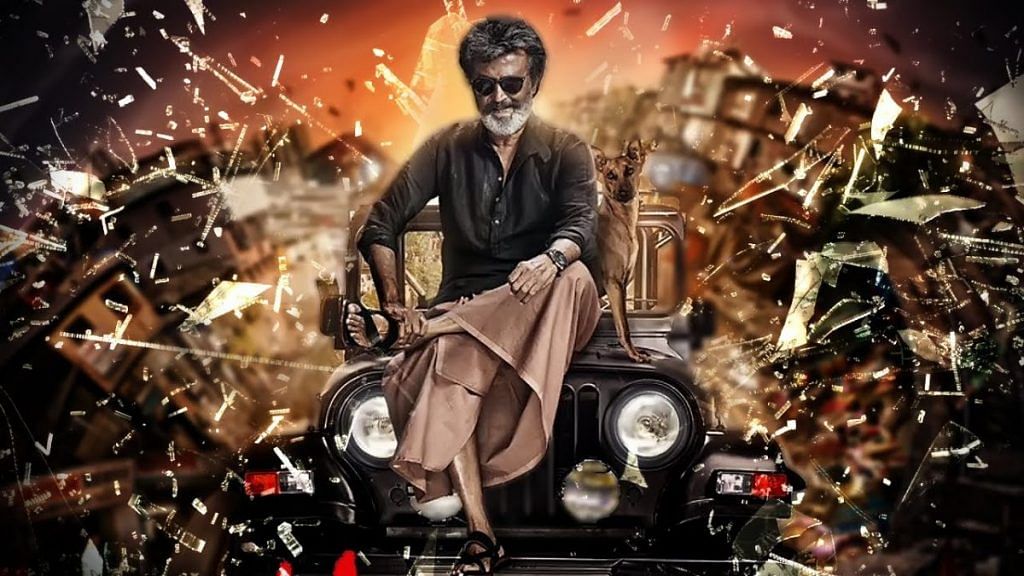Pa. Ranjith’s Kaala drives home its point on Dalit politics very clearly. But it may have a few messages for Bollywood too.
If you’ve ever watched Rajinikanth’s films ardently or followed his politics, it is no secret that Kaala is the least prototype Rajini film.
Kaala is a Dalit-Bahujan recital of their struggle and the credit for getting the politics right in every scene is reserved for director Pa. Ranjith. While the movie drives home its point on Dalit politics very clearly, it has a larger message for Bollywood – wake up and smell the caste.
Bollywood’s record on depicting Dalits is shoddy, to say the least – the last time a mainstream Bollywood actor played a Dalit on screen was perhaps in the 80s.
If you go by Bollywood’s portrayal of Indian society, the 24 per cent Dalits simply do not exist. If they do, it can only be in alternate cinema or in movies that are specifically on issues like reservation that ‘affect’ the larger population too. Bollywood glosses over caste. It pretends as if caste inequalities are just a class issue, like it did most recently in Toilet- Ek Prem Katha.
The first lesson for Bollywood should be to become more representative and diverse.
More representation and diversity
Make no mistake that mainstream Bollywood does not bring caste up because it focuses on class divides. It does a perfectly fine job at showing caste consciousness when it portrays the rich. The elite business families are the familiar Mehtas, Kapoors and Guptas. The puritanical Hindu, like the vegetarian, devout Salman Khan character in Bajrangi Bhaijaan, is a Brahmin. But the average, regular Dalit simply doesn’t exist.
Diversity is shown in accounting for various narratives of contemporary or historical issues. Mythology, in fact, can be retold in changing contemporary settings. However, telling the same majoritarian narrative is Bollywood’s stronghold.
For example, Kaala’s retelling of Ramayana with Ravan as perhaps the good guy is probably a novel perspective for Indians on the other side of the Vindhyas.
But for a country obsessed with a Ram Mandir, it is a powerful message to refer to Rajini’s character, a Dalit, as the head of asuras and have him defeat the film’s antagonist, Hari.
Don’t beat around the bush
Kaala is not subtle about caste. It owns the Dalit narrative in every aspect, ranging from consumption of alcohol as part of Dalit culinary history to using the “body as the only weapon” for oppressed.
Bollywood, however, believes that it is best left to the audience to interpret if a character is Dalit or not.
Take the 2011 Amitabh Bachchan and Saif Ali Khan starrer Aarakshan. Even in a movie centred around the issue of reservation, Khan’s character is simply introduced as Deepak Kumar and not with a giveaway Dalit identity. He could probably be a Dalit, but the director doesn’t tell you that for sure because why take a chance.
Even in the critically acclaimed Newton, Rajkummar Rao’s Dalit identity is revealed subtly through blue walls and pictures of B.R. Ambedkar on them.
The other obvious Dalit portrayal is a stereotype. In Aamir Khan-starrer Lagaan, the Dalit was ostensibly named Kachra. The protagonist clearly was too good to be made a Dalit stereotype.
Therefore, the second lesson for Bollywood is that it must stop beating around the bush when bringing caste to the table.
Don’t take away Dalit perspectives
And, the third learning must be to not take away Dalit perspectives when talking about them.
Bollywood manages to whitewash the Dalit-Bahujan narrative even when it tries to touch on caste issues.
It brings the perspective of oppressors, and not the oppressed. Unlike Toilet- Ek Prem Katha, Kaala does not allow upper caste characters to be preachy about open defecation.
In Toilet- Ek Prem Katha, lack of toilets in Akshay Kumar’s household is a Brahmin’s predicament over whether one should include a space for one’s ‘filth’ inside his house or not. But Kaala depicts open defecation in Dalit ghettos for what it is – lives built around lack of access to a better standard of life.
There are at least three references to ‘romance’ that take place while characters are stepping out to defecate in the open or wait for their turn in the long lines for community toilets.
Yes, violence against women when they go out to defecate in the open and public health concerns are all important, legitimate conversations. But they are often issues that the marginalised can hardly remedy on their own. Kaala while touching upon all those important issues also brings out another humane perspective – how seemingly normal lives have been built around inequalities.
Take a stand
Last, Bollywood can learn to take a stand sometimes. Its excuse that films are just entertainment and shouldn’t be seen with political subtexts is lousy.
In Bollywood, the big league actors take up scripts with politically powerful narratives, give them an overdose of nationalism and tell the audience to shut their critical faculties.
Kaala goes the other way. The opening few shots in the film show compound walls of an urban slum freshly painted with advertisements prompting people to download an app for a clean India. Those few images say it all.
